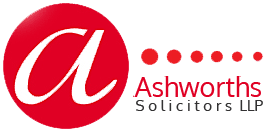What happens if your flat is affected?
 Last month we looked at EWS1 certificates and when these might be required. The requirements are complex and are change frequently, but every flat owner’s worst nightmare is discovering that their block of flats does contain combustible cladding.
Last month we looked at EWS1 certificates and when these might be required. The requirements are complex and are change frequently, but every flat owner’s worst nightmare is discovering that their block of flats does contain combustible cladding.
Whilst a potential delay in obtaining an EWS1 certificate is a significant problem for many leaseholders, it is a problem that goes away if the certificate demonstrates that a block has been inspected and does not contain combustible cladding. If, however, the certificate reveals an issue it will immediately render a flat unsaleable and unmortgageable. There are estimated to be millions of flat owners in that position.
Before any work is even contemplated to problem blocks, leaseholders will often immediately notice an increase in their service charges. Freeholders and their managing agents will frequently consider that they are duty bound to initiate a “waking watch” fire safety patrol. These come at a huge cost with Government figures suggesting that an average of £11,000 per month is being spent on “waking watch” in each affected block of flats. This extra strain on service charges is exacerbated by increased buildings insurance premiums, with many premiums at least doubling over the last few years.
Once it has been established that cladding does need to be removed or replaced, the major question is then around how this is paid for. Most leases will impose an obligation on the freeholder to keep the structure of the building in good repair and condition, and it seems to be beyond doubt that the removal of dangerous cladding is part and parcel of the freeholder’s obligation to keep the block in repair. It would be an incredibly unusual lease, however, that did not allow the freeholder to pass on the repair costs to the leaseholders. These costs can run into tens of thousands of pounds per flat.
In the March 2020 budget the Government launched its Building Safety Fund – a scheme allowing building owners to apply for a contribution towards the costs of remediating unsafe non-Aluminium Cladding Material (ACM) cladding systems on high-rise residential buildings. The March 2021 budget updated many elements of the scheme – including a fund of £30m towards the costs of improved fire alarm systems for blocks that are currently awaiting remediation.
The Building Safety Fund, it is argued, is however beset with problems including:
- the amount initially pledged by way of assistance was £1bn, although this has now been increased to nearly £3.5bn;
- building owners initially had a very limited window of just two months last summer in which to submit their interest in the scheme otherwise they would be barred from making an application (and this was at a time where many freeholders were still struggling to find a competent assessor to even determine whether a building’s cladding was dangerous). This window has now been extended to 30 June 2021 (but works must commence by 30 September 2021);
- very specifically the funding is available to part-fund the removal of ACM cladding. The fund does not cover other types of fire safety issue (such as the removal of timber decked balconies or upgrading smoke vents) and, crucially, does not cover the cost of replacement with other systems;
- funding is available only for high-rise buildings (i.e. over 18 meters in height) even though it is established than many buildings of a lower height do contain issues that need to be addressed;
- funding is categorised as “state aid” which does pose problems for leaseholders that own several properties (particularly if they have also benefitted from COVID related grants) since there are financial limits on the amounts that can be claimed by way of aid.
What seems absolutely certain is that huge numbers of leaseholders will face financial ruin as a result of a system of building regulation approval that has allowed blocks of flats to be built with or retro-fitted with cladding that is now deemed to be unsafe. The Building Safety Fund in its current form will provide some element of financial protection, but coverage is currently fairly limited and there will be thousands of flat owners who will ultimately end up losing their homes as a result.
